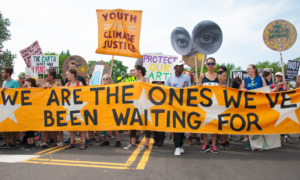Author(s): Georgetown University – Health Policy Institute – Center for Children and Families
Published: Oct. 29, 2019
Report Intro/Brief:
“For many years, the nation has been on a positive trajectory reducing the number and rate of uninsured children. Having health insurance is important for children as they are more likely to receive needed services, have better educational outcomes, and their family is protected from the financial risks associated with being uninsured—even for a short period of time. Recently released data show that this progress is now in jeopardy. For the second year in a row, the uninsured rate and number of uninsured children moved in the wrong direction. This is unprecedented since comparable data began to be collected in 2008.
The number of uninsured children now exceeds 4 million—wiping out a sizable share of the gains in coverage made following the implementation of the Affordable Care Act (ACA) in 2014. Coverage improvements for children began many years before the ACA was enacted through expansions of Medicaid and the creation of the Children’s Health Insurance Program (CHIP). The ACA primarily improved children’s coverage rates by increasing the likelihood that eligible children would be enrolled in Medicaid/CHIP when their parents obtained coverage, simplifying eligibility and enrollment procedures, funding new outreach and enrollment efforts, and establishing the individual mandate. Some children benefited from newly available subsidized coverage in the ACA Marketplaces as well.
Key Findings
- The number of uninsured children in the United States increased by more than 400,000 between 2016 and 2018 bringing the total to over 4 million uninsured children in the nation.
- These coverage losses are widespread with 15 states showing statistically significant increases in the number and/or rate of uninsured children (Alabama, Arizona, Florida, Georgia, Idaho, Illinois, Indiana, Missouri, Montana, North Carolina, Ohio, Tennessee, Texas, Utah, West Virginia), and only one state (North Dakota) moving in the right direction.
- Loss of coverage is most pronounced for white children and Latino children (some of which may fall into both categories), young children under age 6, and children in low- and moderate- income families who earn between 138 percent and 250 percent of poverty.
- States that have not expanded Medicaid to parents and other adults under the Affordable Care Act have seen increases in their rate of uninsured children three times as large as states that have.”
>>> CLICK HERE to see all of Youth Today’s REPORT LIBRARY































